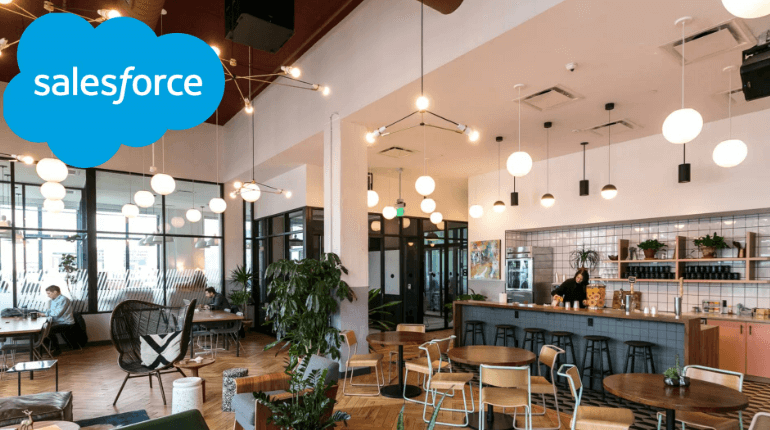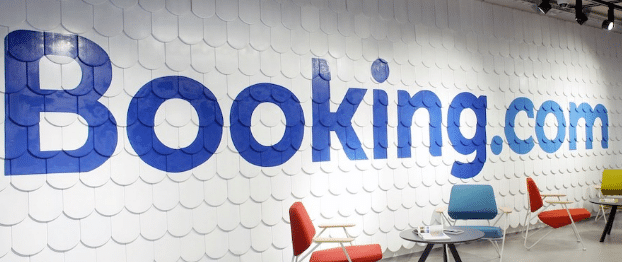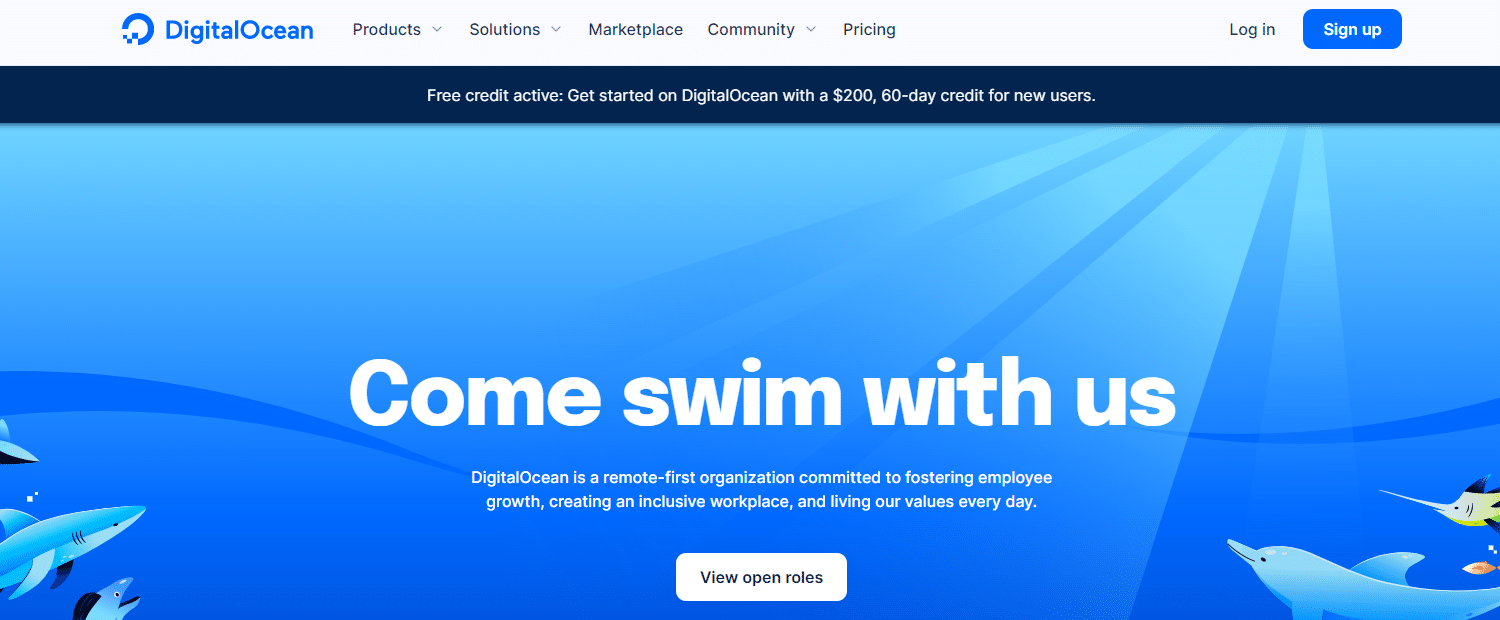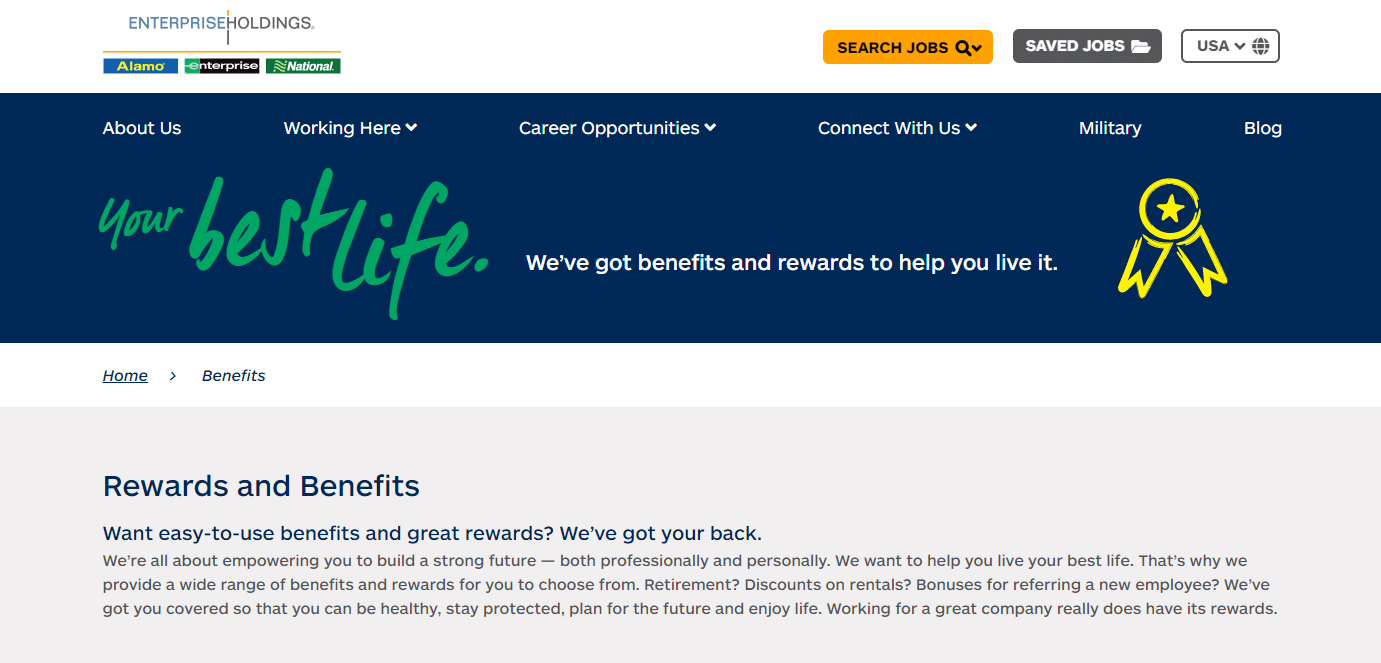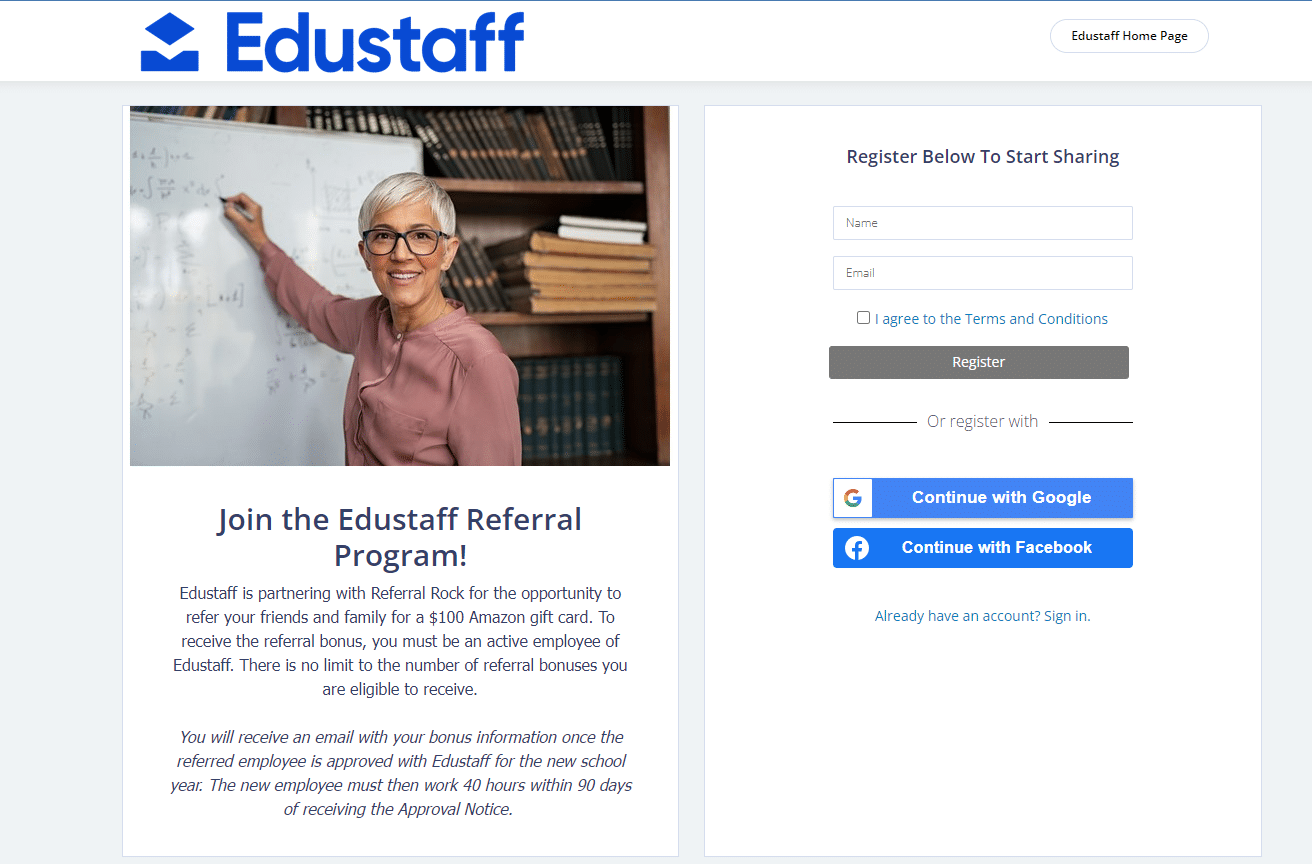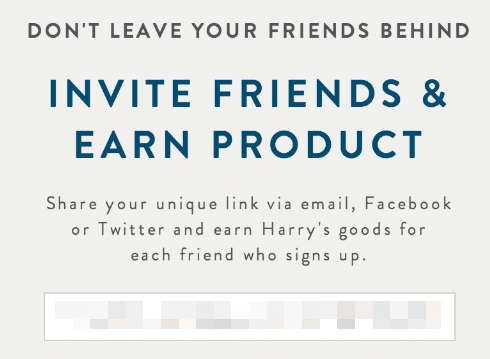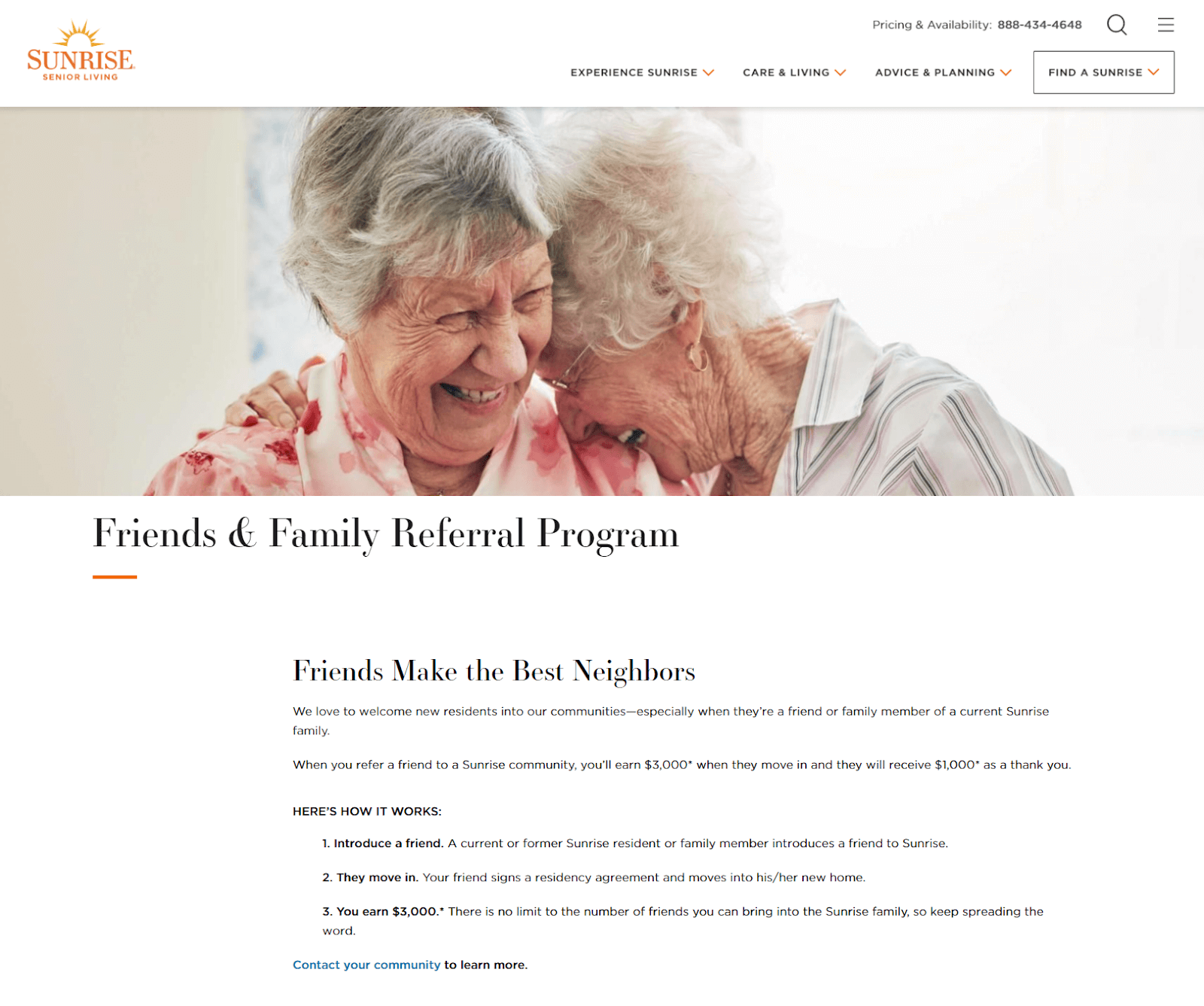Employee referral programs are a popular recruitment strategy used to find top talent and customers. The basic idea of an employee referral program is to incentivize current employees to refer their friends and family.
These programs can help reduce the time and cost associated with traditional recruiting and marketing methods, while also improving the quality of hires and customers.
Today, we’ve rounded up the top 10 employee referral program examples to inspire you as you think about building your own. But before we dive in, let’s cover a few basics first.
What is an employee referral program?
Employee referral programs are becoming increasingly popular among companies as a way to attract top talent, increase customers, and improve employee retention.
The concept is simple: current employees are incentivized to refer qualified candidates for job openings or refer customers to the business. Incentives for these types of referrals typically include cash bonuses, extra vacation days, and even company swag.
Employee referral program types and benefits
There are two types of employee referral programs: employee to employee, and employee to customer.
- Employee-to-employee referral programs
This is where employees refer potential new hires to open positions at the company, and get rewarded when referrals move through the hiring process.
- Employee-to-customer referral programs
Just as it sounds, this is where employees refer potential new customers and get rewarded when their referrals make their first purchase.
These types of programs have several benefits for both the company and the employees.
First, they tap into the personal and professional networks of current employees. This allows companies to identify high-quality candidates that might not be found through other recruitment channels and reach customers they might not have been able to.
For employees, referral programs can be a way to earn additional rewards while also contributing to the success of their company. Employees who refer successful candidates or new customers may feel a sense of pride and ownership in their work, as they are helping to build a strong and successful company.
Additionally, employee referrals can result in faster and more cost-effective hiring, as there is often a shorter time-to-hire for candidates who come through employee referrals. This may be because they are already familiar with the company culture and values.
Overall, employee referral programs can be a win-win for companies and their employees. By incentivizing employees to refer, companies can improve their recruitment efforts and help the company grow its customer base.
Let’s explore a few examples of employee referral programs in the wild.
Best employee referral program concepts: For hiring
This type of employee referral program is the more popular of the two. The goal of an employee to employee referral program is to encourage employees to use their personal and professional networks to recommend potential candidates.
This can be a more cost-effective and efficient way to recruit new employees. Plus it can help companies find high-quality candidates who may fit the job requirements and will also likely be a good cultural fit (as an employee likely would not refer someone who would not be a good fit).
Here are examples of some great employee referral programs.
Inmobi: Experiential referral rewards
InMobi is a global technology company that provides advertising and marketing solutions for businesses. InMobi has an employee referral program that effectively incentivizes current employees to refer qualified candidates for job openings within the company.
In fact, in 2015, 50% of their tech hires came from employee referrals. Prior to 2015, they were giving cash bonuses for employee referrals – this accounted for just 20% of tech hires. The only thing that changed was the referral reward at stake. In April 2015, they began giving experiences like paid trips and big ticket gifts (motorcycles), which caused the amount of employee referrals to jump!
What they did well:
There are a few reasons Inmobi’s program works well.
First, they are giving experiences as rewards. This means employees are more likely to remember their reward versus an extra bonus added to their paycheck. This is beneficial because it will keep them talking about the program and likely get them to keep referring.
Secondly, they made sure program promotion efforts were in high gear. It’s been said that they used team huddles to introduce the program to their employees. They also displayed posters about the program all over the office, and advertised the program as a screensaver on TV monitors. They even put a few of the rewards, including a Vespa, on display in the office.
Finally, they made public announcements and drew attention to the employees who had successful referrals. They award the employee in front of their peers and create a happy commotion to celebrate the employee.
Something to consider:
They used gamification in their program. Along with the epic rewards available, employees who had successful referrals were entered into the grand prize drawing to win an Inmobi branded Vespa.
Intel: Bonuses for diverse hires
Intel started a referral program which would reward any employee who referred candidates to work at the company. However, they added a little twist to seek out diverse individuals who are underrepresented in the tech world.
The diversity referral program was designed to encourage employees to refer candidates from underrepresented groups, such as people of color, women, and veterans. By the end of quarter 1 in 2015, 41% of their new hires were from the underrepresented groups.
In all, Intel set aside $300 million to help diversify their company. A referral of an individual who happens to be from an underrepresented group would lead the employee to a $4000 bonus (double the amount of other employee referrals).
Intel was open to brilliant referrals of all genders, ethnicities, and backgrounds. But their efforts to double down on increasing diversity in the field really panned out and proved to be successful with the doubled reward amount at stake.
What they did well:
Their program was designed to help fix a problem within their industry. Not all referral programs can accomplish this.
They used their program as a way to both increase awareness of the situation commonly found in the tech world, and as a way to increase their workforce. Considering all referrals, if successful, would lead to a reward, they were able to be inclusive to everyone.
It’s really impressive how they doubled the reward amount for anyone who was hired via a referral in the underrepresented groups. By adding in that extra appeal, they were able to work towards leveling out the playing field in the industry and raise awareness of the situation.
Something to consider:
Consider using your referral program as a way to serve a bigger purpose. This isn’t always something that a referral program can do. But, if you happen to have a situation or event that a referral program can have a dual purpose for, go for it – it will not only help with the problem at hand, but it can help you grow as well.
Salesforce: Recruitment happy hours
Salesforce recruitment happy hours were networking events that were organized as part of their recruitment strategy. These events are designed to provide a casual setting for employees’ friends to learn about the company’s culture, job opportunities, and the hiring process.
The happy hours were great in that they allowed people to build connections, allowing for referrals who may not want to be hired right away to build a connection to use later on. Their program proved to be very successful, and over 50% of new hires were funneled in from the referral program.
What they did well:
Salesforce set up a nice reward system for their employee program. Every employee who brought in a referral would receive a gift, regardless of whether the referral ended up being hired or not. This provided extra motivation for employees to participate in the program.
Something to consider:
Hiring the right person can be stressful. By creating an ‘exclusive’ invite-only happy hour for your employees and their friends, like Salesforce did, you may be able to meet some great candidates and learn a lot about them in a casual setting. In this setting, stakes aren’t quite as high, so people may be more inclined to have real conversations.This will allow you to actually learn more about their personality and what qualities they may be able to bring to the team.
Booking.com: Ramping up referrals for hard-to-fill roles
Finding an employee is already a task within itself, but when you’re a company who provides service globally, and across 42 languages, it makes hiring even more complicated. Booking.com, found traditional hiring methods were not leading them to the right candidates.
Booking.com’s universal language is English, but since they provide service globally, they try to seek customer service candidates who are bilingual. They found that employees who fit this description usually know other people who fit this as well. Thus, their referral program was born.
When the program started, they brought in over 40% of new hires through referrals. In fact, 413 of their 1000 employees, at their North American office, at that time were referrals. Proving that their referral program worked in finding individuals who fit their hard-to-fill roles.
What they did well:
The Booking.com referral program offered a cash incentive for all successful referrals. What made this even better, was that there was not a cap to how many referrals an employee could send in. On top of that, they gave increased referral bonuses to employees who referred someone for a high demand role, for example, an individual who could provide customer service in a specific market’s language, who also spoke English.
Something to consider:
Booking.com did something a little unconventional. They asked for referrals during interviews as well. Let’s say someone who is bi-lingual and speaks English and Portuguese was doing really well in their interview. The interviewer would ask if they knew anyone else who may be interested in the position as well. This way, they did not have to wait for the candidate to actually start working to continue their search for more candidates to fit the role. If you’re in a bind, and are needing to bring in a lot of people quickly, asking for a referral during the interview may be a good strategy.
PURE: A focus on quality referrals
Insurance company PURE grew rather quickly, and because of this, they needed a way to manage this growth. In fact, many employees began referring and promoting PURE to their networks and friends before there was a formal process in place.
Thus, their referral program was born. The team introduced referral bonuses and created a smooth experience for people to refer. All their efforts paid off, 91% of all referred new hires are still working at PURE to this day. In total, 40-60% of all new hires come from employee referrals.
This goes to show if you create an experience and workforce that people are happy to be a part of, it’s natural for people to want to share that with their friends.
What they did well:
PURE started from the ground up. They made their workplace referrable – employees like the company and are happy to refer. They found that using public recognition works really well so they would thank employees for referring candidates. New hire bonuses are not paid until 6 months post-hire, so having recognition events and company-wide-shout outs was a way to say thanks to employees before they technically get their cash incentive.
Something to consider:
PURE does not waste time or skip a beat. They ask new hires for referrals within their first 30 days of employment. This is something to consider because asking during this ‘honeymoon’ phase can lead to strong referrals. As employees are typically very happy right after starting the job.
So if your business does something similar, where you do a recap or have a quick chat to learn about the new hire’s experience, use it as a time to ask for a referral. This can be an especially beneficial time to ask if the new hire is obviously liking their job.
DigitalOcean: Inspiring employee referrals by giving back
DigitalOcean wanted to create a referral program that matched their company culture and help amplify their impact.
So in May of 2017, they launched a new employee referral strategy. The employee referral bonus was bumped up to $3500. But in addition to that, a $1500 charitable donation would be made on behalf of the employee, paid by DigitalOcean.
If the employee wanted to add to that donation, DigitalOcean would also match that amount. If an employee decided to donate $500 or more they would also be entered into the ‘Golden Raffle Ticket’ annual event in which the winner would receive an all expense paid trip.
Because they used credit grants to help fund their program, they were able to see some great results and truly empower employees to refer and donate a lot of money. 43% of employees participated in their program – which is 4x above the industry average.
What they did well:
Their referral reward goes far above the normal cash incentive. They provided a great cash bonus, but the donation aspect of the reward really helped intrigue employees to participate. Plus, they used an element of gamification, as donating an extra amount could also get an employee a golden ticket for a grand prize.
All of these elements of the reward align with the company culture and have led to great employee engagement. Because of this increased engagement, 40% of all new hires have actually come from referrals.
Something to consider:
If you’re able to, try to align rewards to meet your vision and culture. If you are a company that plays a big role in a specific niche, try to include that in your program. DigitalOcean is an organization that wants to change the world. So, by giving their employees the opportunity to donate to an organization of their choice, it allowed employees to have a positive and and more importantly a rewarding experience as they were able to contribute something to help change the world.
Enterprise Rent-A-Car: Turning employee referrals into a competition
Enterprise Rent-A-Car is known for ‘promoting from within’, and prides itself on employee recognition. This is also true for their employee referral program. When a referral is made, the employee receives a thank you email, and when the referral is hired, the referring employee is publicly acknowledged and given a shout out on the company Twitter.
The program offers employees both prizes and monetary rewards. But, the company has given regional teams the opportunity to customize rewards and change competitions as necessary, to keep engagement high.
Many employees are able to start a career path with the company. 30% of all employees go through management training, making employee satisfaction high. This makes a very appealing case for employees to refer more potential candidates. In fact, 30% of all hires are from employee referrals.
What they did well:
The Enterprise team follows which regions are referring the most. They then turn that data into friendly competition and post stats of the different regions’ programs to the company leaderboard. The flexibility each region has on its referral program allows them to figure out what they can change in the program to get a higher rank.
Something to consider:
For larger enterprises at national and global levels, allowing different regions and branches the opportunity to change the program up is a great way to keep engagement levels up. Comparing referrals received and hired among all the branches can also help flesh out what works well and what doesn’t.
EduStaff: Keeping the referral process simple
Edustaff’s employee referral program follows a simple and right to the point approach. Plus, there are no limits on how many people an employee can refer. Approved referrals provide the employee with a gift card.
Any employee can sign up for the referral program. Once they do so they are provided with their own unique referral link to share with friends and family. This custom link allows tracking to be done automatically. Plus, the referring employee can keep track of the progress of each referral they send.
What they did well:
They provided employees an easy to access space just for the referral program. This means an employee will be able to easily find their link to share quickly and then track referrals. Even though they did not put a limit on the number of referrals an employee can have, they did create a solid definition of what an approved referral looks like.
Sometimes, depending on your industry or business model, you may need to set boundaries. For example, Edustaff services over 550 public schools providing substitute teacher positions. Someone may come in through a referral, and be hired… but decide to not work. Since substitute teachers may not always have a consistent schedule, they put a stipulation in place that approved referrals are those who have worked at least 40 hours within a 90 day period. This little stipulation is a great way to prevent misuse of the rewards.
Something to consider:
Consider using an automated referral system or platform like Edustaff has done. Their program was created to be very easy to follow and give employees an actual space to refer and track any referral they may have sent (plus, track the status of rewards).
Best employee referral program concepts: For finding new customers
An employee referral program is typically designed to incentivize employees to refer potential candidates to the company. However, it is possible to modify the program to encourage employees to refer potential customers as well.
Just like in any other type of referral program, you have to figure out what will drive employees to want to refer customers. This could include providing referral rewards or incentives for successful customer referrals, such as discounts on products or services, gift cards, cash, or other perks.
Even if a company does not have a formalized employee to customer program, some companies allow employees to participate in their regular referral program they host for customer to customer referrals. One main difference is that the reward for a customer referral may not have to be as large as an employee to employee referral. Which is why it makes sense for some businesses to allow employees to participate in their existing customer referral program.
Employee to customer referral programs are more difficult to find, as most employee referral programs cater towards employment instead and are kept within the walls of the company. But, we do have a couple of examples to review.
Harry’s
Harry’s grew incredibly fast, thanks to their pre-launch referral program. This program relied heavily on employee referrals to get it kicked off. Even the founders of the company participated in referring friends and other entrepreneurs to try the product.
At the beginning of the program, Harry’s employees were the ones who were encouraged to send the product announcement to their friends and family – which prompted said friends to join the waitlist. Eventually, this expanded and referrals of employees started sending their own referrals, and the referral chain kept growing.
What they did well:
Harry’s had their employees start introducing the company and product to their friends before the product even launched. This helped solidify a solid base of referrals. Since friends and family are likely to want to help support their friends’ business, they would also start referring. These types of referrals were personal and proved to be a solid way to spread the word of an upcoming product. During the pre-launch a total of 65,000 referral emails were sent.
Something to consider:
Harry’s referral program formed a viral loop. Anyone who came in via a referral landed on a microsite. This site consisted of just two pages, an about page that asked the referral to sign up for updates on the soon to launch product, and a referral invite page.
As soon as someone signed up for the mailing list, they landed on the second page and were prompted to refer as well. By adopting a similar strategy with your employee referral program, you may be able to get your employee’s referrals to continue referring, building your own viral loop.
Sunrise Senior Living
Sunrise Senior Living offers a referral program to help bring in new residents. They have opened the program to residents, volunteers, and employees. The referral bonus is pretty great, and uses a dual-incentive strategy, providing both the referrer and the referral with the hefty reward.
What they did well:
They made the terms of the program really easy to understand, and the process of referring easy as well. They also make the program really family oriented. They mention the Sunrise family, in a few spots, and set the scene that all referrals coming in will become part of the family. By using feel-good language, they may increase their chances of being both referred and having the referral join the community.
Something to consider:
Consider offering a double-sided incentive. When the referral gets a little extra bonus, they may be more inclined to see what the company is all about, and potentially make the purchase (or in this case, sign a lease). You could also use a branded incentive, or store credit/gift card – that referral only has one way to spend the money, and it’s on you.
Use referral software for the best employee referral program
Employee referral programs can be an effective way to recruit top talent and new customers for an organization. Referral software can help streamline the process and make it easier for employees to participate and for the company to manage the program.
Here are some benefits of using referral software for the best employee referral program:
- Easy tracking. Tracking and encouraging employee referrals manually can be time-consuming and difficult. But there’s a better way… Employee referral software tracks employees’ referrals, so you know exactly how your program is performing. You can see which employees are referring the most candidates, which candidates are being hired, and which sources are most effective.
- Easy reward management. Referral software also instantly rewards employees when their friends move through the hiring process or make a purchase – at the touch points you’ve selected.
- Referral Rock for the win. Not all software may be a fit. But, Referral Rock can help you run employee-to-employee and employee-to-customer programs, for the greatest flexibility.
Using referral software can help you create the best employee referral program by making the process easier, more engaging, and more effective.
Conclusion
Employee referral programs can be a highly effective way to both recruit top talent and bring in great customers for your business. By leveraging your employees’ networks and incentivizing them to refer qualified candidates and customers, you can save time and money.
To maximize the effectiveness of your employee referral program, consider using referral software. You’ll be able to make the recruitment process easy while also improving the quality of your hires and potential customers.
Plus, you will be able to…
- streamline the process
- increase engagement
- improve tracking and reporting
- enhance communication
- boost the quality of referrals
By implementing a well-designed employee referral program, you can create a win-win situation where your employees benefit from rewards and your organization benefits from growth.



